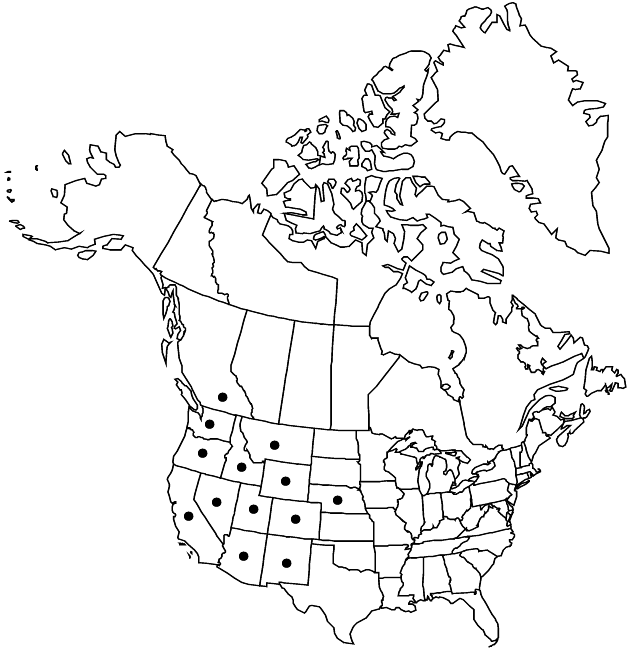Difference between revisions of "Euthamia occidentalis"
Trans. Amer. Philos. Soc., n. s. 7: 326. 1840.
imported>Volume Importer |
imported>Volume Importer |
||
| Line 58: | Line 58: | ||
|publication year=1840 | |publication year=1840 | ||
|special status= | |special status= | ||
| − | |source xml=https:// | + | |source xml=https://bitbucket.org/aafc-mbb/fna-data-curation/src/2e0870ddd59836b60bcf96646a41e87ea5a5943a/coarse_grained_fna_xml/V19-20-21/V20_195.xml |
|tribe=Asteraceae tribe Astereae | |tribe=Asteraceae tribe Astereae | ||
|genus=Euthamia | |genus=Euthamia | ||
Latest revision as of 20:01, 5 November 2020
Perennials or subshrubs, 40–200 cm. Stems (erect, stout) glabrous, glaucous. Leaves spreading-ascending to erect; blades 3- or -5-nerved, linear, 82–100 × 4.3–10 mm, lengths 10–27 times widths, gradually to abruptly reduced distally, herbaceous to firm-herbaceous, margins scabrous, apices abruptly acute to acuminate, faces ± gland-dotted (18–56 dots per mm²), adaxial and vein axils often sparsely hairy. Heads mostly pedunculate, in relatively narrow, elongate arrays 33–60% of plant heights (often interrupted and with multiple levels). Involucres campanulate, 3.7–4.9 mm. Phyllaries stramineous, sometimes green-tipped, outer narrowly lanceolate, inner linear (firm), apices acute to acuminate. Ray florets (15–)17–22(–28). Disc florets (7–)9–11(–18); corollas 3.1–4.2 mm. 2n = 18.
Phenology: Flowering Jul–Nov.
Habitat: Moist to wet soils of streambeds, lake shores, and fresh to saline marshes
Elevation: 0–1600 m
Distribution

B.C., Ariz., Calif., Colo., Idaho, Mont., Nebr., Nev., N.Mex., Oreg., Utah, Wash., Wyo., Mexico (Baja California).
Discussion
Selected References
None.